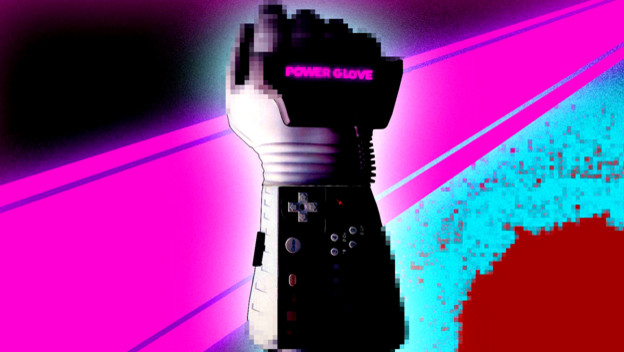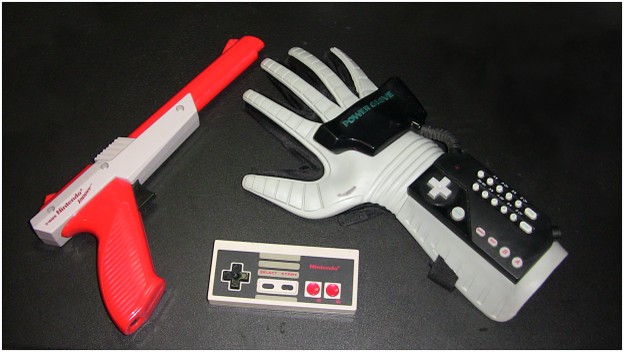Nintendo has never been a very conventional video game company. Not only is its software typically wacky and weird, but its peripherals often seem like they come from the mind of a madman. Early on, it innovated and tried things that its competition wasn’t ready to take the risk on, and while that didn’t always pay off, Nintendo never lost hope. It just kept trying, and eventually, released the Nintendo Wii which took off and ended up in living rooms across the world despite its unusual control scheme.
The NES days were full of Nintendo’s signature sort of playful experimentation. When the video game crash of 1983 occurred, Nintendo got especially creative by creating ROB. ROB was a peripheral shaped like a robot that was advertised more as a toy than a video game. Unfortunately, it only supported two games; Gyromite and Stack Up .
In Gyromite , players operate ROB using the first controller. ROB, using his arms, grabs hold of a top and rotates it over to a spinning device. Then, he moves the top to either a red or blue plate to control on-screen switches. In this way, it looks like players are controlling a robot and the robot is playing the video game. It actually does manage to seem more like a toy than a game.
Stack Up feels like a reversal of Gyromite, where players control an in-game character that jumps on buttons to control ROB. ROB grabs discs, lifts them and rotates them over to different panels that surround him. The player must emulate various stacking patterns that are displayed on screen. Neither of these games offered a particularly compelling experience, but ROB sure did have a lot of novelty in the 80s. Collectors still love the little “Robotic Operating Buddy.”
In 1996, Bandai Namco released the Power Pad for the Nintendo Entertainment System. This mat, which had two sides, allowed players to control games using their feet. The side that saw the most use was the one that had 12 numbered, circular buttons. This peripheral also didn’t get a whole lot of games, but what it did get went on to influence many others. One title, World Class Meet, was one of Nintendo’s earliest forays into fitness games. Another, entitled Dance Aerobics seems to be an early title in the lineage of dance games like Konami’s Dance Dance Revolution. Dance Aerobics also contained a mode that allowed players to play simple songs, using notes on a scale that correspond to buttons on the pad. Nintendo later did something similar, allowing musical composition in its Super Nintendo game, Mario Paint; a game that incorporated a mouse and pad, a console first.

Then, of course, there was the infamous Power Glove accessory. While not developed by the Big N, this officially licensed product was one of the earliest forays into virtual reality. It even managed to be a commercial success, even if its games more or less failed to profit. Critics lamented the imprecise controls and the lack of pre-packaged software alongside the device, but the appeal of the quirky thing offset those issues. The glove went on to be commonly referenced in pop culture, particularly because of its appearance in the Nintendo-produced film, The Wizard.
Later, Nintendo would focus on connectivity, encouraging players to link Gameboy Advance systems up to the Nintendo Gamecube so that each player could get their own unique perspective on a game’s action. Nintendo 64’s transfer pack facilitated the transfer of Pokemon from the Gameboy games onto console title, Pokemon Stadium. Hey You, Pikachu! made it possible for gamers to issue commands to the Pokemon Pikachu using a mic. Nintendo has been nothing but tenacious in pushing its out of the box thinking on gamers. And it’s a good thing it did, because the Nintendo Wii’s success communicated to gamers that Nintendo wasn’t content to fade away in the console marketplace as they had begun to do in the Gamecube era.
Nowadays, though, Nintendo is mostly known for its innovation in gameplay. Its amiibo, which are NFC toys of Nintendo properties that communicate with video game consoles, are largely inspired by other franchises like Skylanders. The Nintendo Wii U even seems to be struggling as Nintendo Wii fans don’t see much reason to switch to the new console and many hardcore game fans don’t see the Wii U as much of a draw. Perhaps this is why Nintendo’s next project, the NX, is right around the corner. Now the question is whether or not Nintendo is going to conform or, instead, going to try to blow us all away with something new. It’s always hard to tell with Nintendo.
